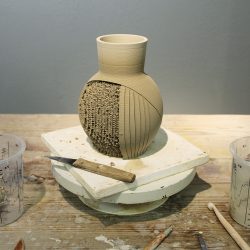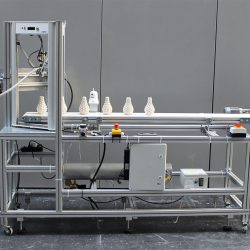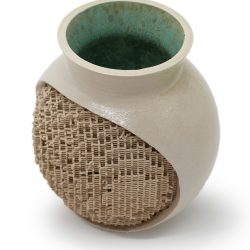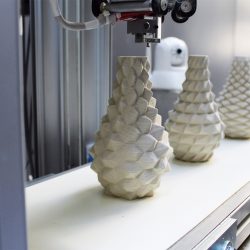Tradition im Wandel der Digitalisierung
Description
The diploma thesis contains a technical part, in which I developed a fully automated ceramic 3D printer that allows the serial production of 3D printed ceramics for the first time. The second part includes a design part that has created two series of vases making use of this unique possibilities.What is the Topic?
Ceramic factories have come under increasing pressure in recent decades. Producing small-batch products using traditional methods has become increasingly expensive over time. Low-quality mass-produced goods have flooded the market and made small factories superfluous. As a result, most businesses had to shut down, leaving much of the broad knowledge of a centuries-long tradition lost. Innovation inertia and the near to extinction of a classically trained profession have prevented the digital developments of the 21st century from gaining a foothold in this industry. My diploma thesis combines traditional craftsmanship with the technical possibilities of the 21st century.
Why does it look like this?
The first collection "Surface" are vases for the lower price segment that show what diversity can be obtained by 3D Printing and by advantage of no longer needing moulds in the production process. I have developed a parametric program that generates surface structures through a random generator. An infinite number of forms can arise, which are automatically printed by my 3D printing system. The second series "Skin" shows the complex structures can now be achieved through 3D printing. These are used on vases only as an example and can be used as highly efficient sound or thermal insulation.
What is special?
So far, 3D printing processes have not been able to establish themselves in series production, although they bring incredible benefits in terms of sustainability, product price, logistics and product diversity. This is because today's processes are either too expensive, too slow, or the materials and their surface finish are not convincing enough. The situation is different when it comes to printing damp clay, which is later fired into ceramic. Thanks to my printing system, I was able to drastically shorten, flexibilize and automate printing times, making the whole thing economical. My specially developed clay mix with purely natural additives makes it possible to ensure a smooth and later surface to be refined with glazes. Since the conventional industrial production of ceramic products is time-consuming and expensive, my system offers a real alternative. Add to that the unique possibilities offered by 3D printing. Inclusions, undercuts and complex structures can be realized.
What is new?
My 3D printing system is the first of its kind, allowing the serial production of 3D printed objects for a broad mass. For the first time it is possible to produce exclusively digitally. This means that products can be configured by the customer himself, thus creating a serial custom production. What used to be a contradiction now becomes practice. It is no longer necessary to produce in stock, but on-demand. The two series of vases are examples of the possibilities opened up to the designer, the architect and the customer.






